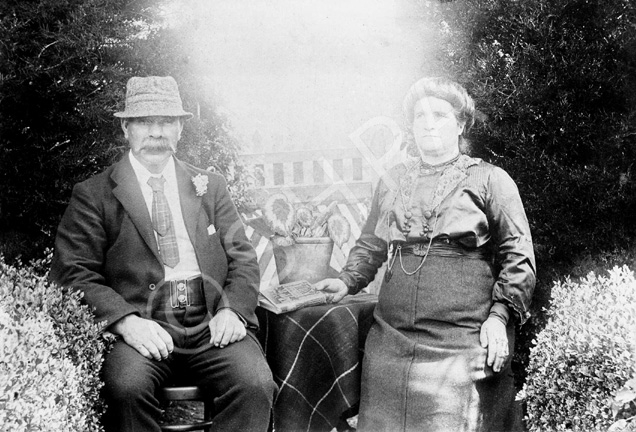| |

|
| Reference: |
877
|
| Caption: |
Copy for Mrs Robertson, Old Edinburgh Road, Inverness. Copied in February 1961. Gentleman is Alexander MacLennan (1856-1932) and was taken in Hawkes Bay, New Zealand in 1916, shortly before his return to the UK. See also image 877. The following biographical details have been kindly provided by Dave Conner. Alexander MacLennan had been a constable in the Inverness-shire Constabulary. He joined the Constabulary on 28th July 1886, at the age of 30 years. He was a native of the Lochalsh Parish of Ross-shire and had formerly been a shepherd. Prior to joining the Inverness County Police force, he had served for about three years in the Inverness Burgh Police. Perhaps for the very reason that he knew the Inverness town area, and of course the town officers and local criminals, he was stationed at Force Headquarters at Inverness Castle on appointment, and would have policed the rural area around the town. In November 1886 his pay was raised when he was advanced to the higher level of third class Constable, and he advanced again - to second class - in August 1887. In February 1889 a further advancement was granted by the Chief Constable, to first class, followed six months later by the award of Merit Class, the top wage level for Constables. After three years working the rural beats from Inverness, in May 1891 he became the beat officer for Culcabock, which was then a small village and farming community near Inverness but which now lies within the Inverness town boundary. Indeed the present Force Headquarters of the Northern Constabulary is located in the Culcabock area. After one year at Culcabock PC MacLennan moved again, in May 1892, to the village of Ardersier (then known as Campbelltown) which is on the coast mid-way between Inverness and Nairn. Then, as now, the main influence on the village was the army base at Fort George. Other than the small village, the beat was entirely rural. In December 1892 a further transfer saw Constable MacLennan move again, to Ballifeary on the outskirts of Inverness. Nowadays what was the Ballifeary beat is also well within the town of Inverness. The following May, the officer moved again, back to Culcabock, where he remained until July 1899, when he was transferred to Lentran, between Inverness and Beauly. He would remain as Beat Officer there for no less than 13 years. Alexander MacLennan's final transfer was somewhat further than all his previous moves put together, to Broadford on the Isle of Skye. He moved there during June 1912. PC MacLennan retired on pension from the police service on 5th April 1914, after having completed more than thirty years police service, at the age of 58. His pension would not have been very great, as it was based on the police salary of the time, which itself was poor. When he joined the police there was no such thing as a police pension. It only came about following the passing of the Police Pensions Act of 1890. |
| Added: | 10/06/2012 |
| Keywords: |
couple portrait outdoors
|
| |
|